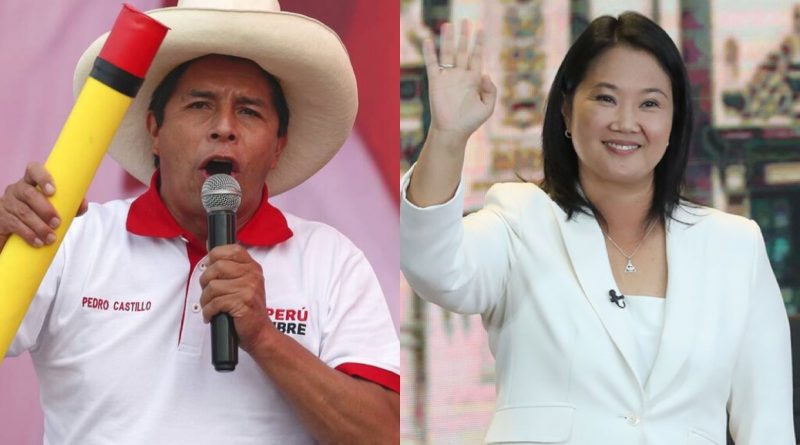Here’s What Peru’s Final Pre-Election Polls Say
Pollsters have published their final surveys as Peruvians prepare to vote in the Presidential election runoff on Sunday, June 6th. The choice will be between leftist candidate Pedro Castillo, and far-right candidate Keiko Fujimori, the first lady during the dictatorship of her father, Alberto Fujimori, in the 1990s.
With just five days to go and with pollsters barred from publishing further surveys, what do the final figures indicate?
Datum: The widely-respected polling company indicates that Pedro Castillo maintains the lead with 42.6%, while Keiko Fujimori trails with 41.7%.
IEP: The academic ‘Institute for Peruvian Studies’ research group have carried out its own voter intention survey with final figures giving Pedro Castillo 40.3% and Keiko Fujimori 38.3%.
Ipsos: The international firm places Castillo at 51.1% and Fujimori at 48.9%.
CPI: The market research group has Pedro Castillo at 41% and Fujimori at 40.2%.
All polls suggest that Pedro Castillo’s lead has been dramatically reduced since the massacre at a bar in the VRAEM region, in which gunmen killed 16 innocent bystanders, on May 23rd, just two weeks before the elections. The military immediately attributed the terrorist attack, one of the worst in years, to the group known as Shining Path. This allowed Fujimori to revive old discourses around ‘leftist terrorism’.
Survivors have cast doubts on the official version of events, though it appears to have given Fujimori’s campaign a second-wind. A poll by the IEP, conducted just three days before the killings, placed Castillo ahead by 10 points, with 44.8% compared to 34.4% for Fujimori.

Castillo’s campaign hopes that pollsters have underestimated support for the leftist candidate. In neighbouring Bolivia, polls underestimated support for the MAS by around 10% in the 2020 election. The miscalculation, which Evo Morales says is deliberate, is due to underreporting in indigenous rural areas where phone and internet service is less reliable and where in-person polling is difficult to reach and costly. The same areas have provided the strongest levels of support for the MAS.
The demographic map of Castillo supporters suggests similarities to that of Bolivia’s MAS. Like the MAS, Castillo performs poorly in the largest urban centres. The last survey by Ipsos indicated that Fujimori is ahead by more than double in the capital city, Lima, where she races ahead with 67.2%, while Castillo languishes at just 32.8%. The numbers are reversed when counting the rural vote, in which Castillo receives 72.2% of voter support, compared to just 27.8% for Fujimori.



